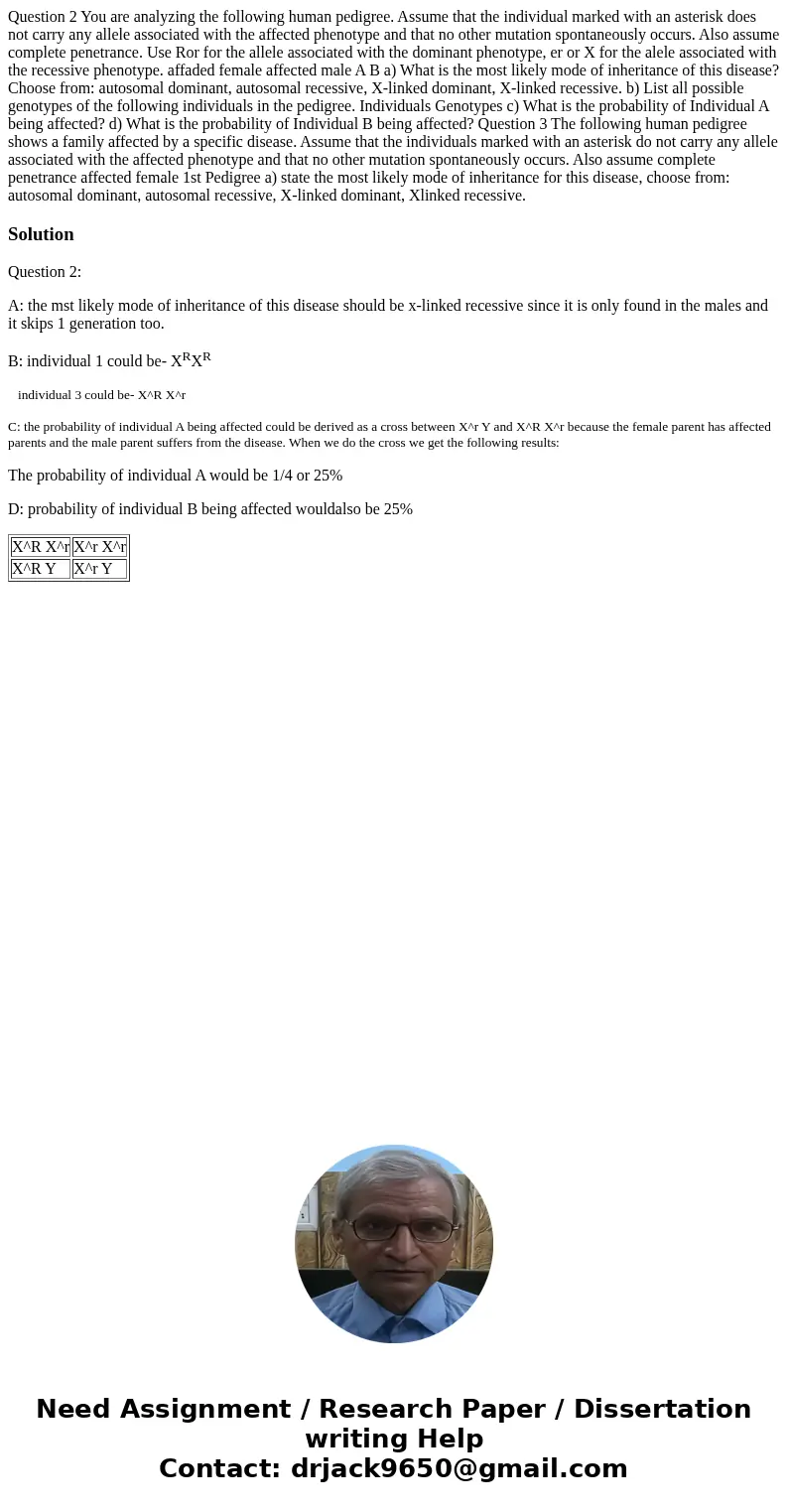Question 2 You are analyzing the following human pedigree As
Question 2 You are analyzing the following human pedigree. Assume that the individual marked with an asterisk does not carry any allele associated with the affected phenotype and that no other mutation spontaneously occurs. Also assume complete penetrance. Use Ror for the allele associated with the dominant phenotype, er or X for the alele associated with the recessive phenotype. affaded female affected male A B a) What is the most likely mode of inheritance of this disease? Choose from: autosomal dominant, autosomal recessive, X-linked dominant, X-linked recessive. b) List all possible genotypes of the following individuals in the pedigree. Individuals Genotypes c) What is the probability of Individual A being affected? d) What is the probability of Individual B being affected? Question 3 The following human pedigree shows a family affected by a specific disease. Assume that the individuals marked with an asterisk do not carry any allele associated with the affected phenotype and that no other mutation spontaneously occurs. Also assume complete penetrance affected female 1st Pedigree a) state the most likely mode of inheritance for this disease, choose from: autosomal dominant, autosomal recessive, X-linked dominant, Xlinked recessive.

Solution
Question 2:
A: the mst likely mode of inheritance of this disease should be x-linked recessive since it is only found in the males and it skips 1 generation too.
B: individual 1 could be- XRXR
individual 3 could be- X^R X^r
C: the probability of individual A being affected could be derived as a cross between X^r Y and X^R X^r because the female parent has affected parents and the male parent suffers from the disease. When we do the cross we get the following results:
The probability of individual A would be 1/4 or 25%
D: probability of individual B being affected wouldalso be 25%
| X^R X^r | X^r X^r |
| X^R Y | X^r Y |

 Homework Sourse
Homework Sourse